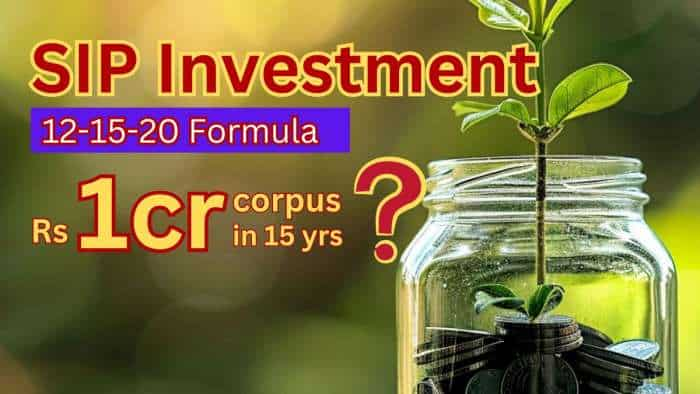India's economy already 10% more energy efficient than G20 average: IEA
The IEA has analysed the impact of measures like those proposed by the LiFE initiative, such as buying an EV or taking public transport, as part of comprehensive energy transition strategies.

India's economy is already 10 per cent more energy efficient than both the global and G20 average. India took less time to go from half to full electricity access than other major economies, the International Energy Agency (IEA) said on Monday. Just hours ahead of Prime Minister Narendra Modi inaugurating the three-day India Energy Week in Bengaluru to showcase India's rising prowess as an energy transition powerhouse, the IEA said the adoption worldwide of the kinds of actions and measures targeted by LiFE (Lifestyle for Environment), including behavioural changes and sustainable consumer choices, would reduce the annual global carbon dioxide emissions by more than 2 billion tonnes in 2030.
The LiFE initiative was launched by Prime Minister Narendra Modi at COP26 in Glasgow in November 2021. It aims to encourage the adoption of sustainable lifestyles in India and internationally to tackle the challenges of environmental degradation and climate change.
A new report, "LiFE Lessons From India", by the IEA looks at how India's G20 Presidency this year could strengthen the LiFE initiative internationally to help reduce emissions, energy bills, and inequalities in per capita energy consumption and emissions between countries.
Click Here For Latest Updates On Stock Market | Zee Business Live
According to the LiFE initiative, the global adoption of such measures would also save consumers globally around $440 billion in 2030.LiFE measures can also help lower inequalities in energy consumption and emissions between countries. The reductions the measures could deliver in per capita carbon dioxide emissions in advanced economies by 2030 are three to four times greater than in emerging market and developing economies, it says.
The report says already the third largest national market globally for renewables, India has recently seen the growth of consumer-centric solutions like distributed solar PV take off, with rooftop solar growing 30-fold in less than a decade.
Supportive policies and awareness campaigns in India have also driven electric passenger vehicles to a market share of almost five per cent in 2022 - with sales tripling from 2021.India's example shows the importance of behavioural change and consumption choices in driving energy transitions.
The IEA has analysed the impact of measures like those proposed by the LiFE initiative, such as buying an EV or taking public transport, as part of comprehensive energy transition strategies.IEA Executive Director Fatih Birol told IANS, "India's G20 Presidency this year represents a unique opportunity to globalise the LiFE initiative -- providing a knowledge-sharing platform for other leading economies to realise the impact that LiFE's recommendations can have in the fight against climate change, air pollution and unaffordable energy bills.
"Since the G20 makes up nearly 80 per cent of global energy demand, meaningful changes by its members can make a big difference."The International Monetary Fund estimates that India will be the world's third-largest economy by 2027, and India is already on course to become the most populous country this year.
Its critical challenge is to ensure secure and affordable energy for growth while advancing its net-zero transition over the coming decades.
To meet these challenges, India has embarked on a dynamic new phase in its energy transformation, which spans three broad areas.
Firstly, it has launched important initiatives to bring down the prices and increase the supply of clean energy. These include a target of non-fossil fuel sources contributing to 50 per cent of India's power generation capacity by 2030; a National Green Hydrogen Mission with the ambition of establishing annual renewable hydrogen production of 5 million tonnes (Mt) by 2030; and biofuel mandates that target 30 per cent blending of ethanol in petrol by 2030.
Secondly, India seeks to domesticate parts of the global supply chains that will be critical to its new energy economy. This includes the Production Linked Incentive (PLI) scheme that promotes the domestic manufacturing of solar PV, advanced batteries and electric vehicles.
Thirdly, the government has focused on demand-side measures, including taking the first steps towards the creation of a national carbon market, an energy efficiency trading scheme for industries, incentivising the purchase of electric vehicles, bulk procurement of electric buses for public transport, standards and labelling of appliances, and most recently, the Lifestyles for Environment (LiFE) initiative that aims to nudge behaviours and individual consumption choices towards cleaner alternatives.
These measures have immense potential but need global support. The IEA estimates that India will need $145 billion per year until 2030 in clean energy investment to put it on a path towards net-zero emissions by 2070. This is triple the current level of annual clean energy investment in India.
Also, read- Budget 2023: What is Finance Bill and how is it different from Money Bill?
Get Latest Business News, Stock Market Updates and Videos; Check your tax outgo through Income Tax Calculator and save money through our Personal Finance coverage. Check Business Breaking News Live on Zee Business Twitter and Facebook. Subscribe on YouTube.
RECOMMENDED STORIES

Senior Citizen Latest FD Rates: Know what major banks like SBI, PNB, Canara Bank, HDFC Bank, ICICI Bank are providing on fixed deposits

Gratuity Calculator: Rs 38,000 as last-drawn basic salary, 5 years and 5 months of service; what will be gratuity amount?

Retirement Planning: In how many years your Rs 25K monthly SIP investment will grow to Rs 8.8 cr | See calculations

Top 5 Small Cap Mutual Funds with best SIP returns in 1 year: See how Rs 25,000 monthly investment has grown in each scheme

Top 7 SBI Mutual Funds With Best SIP Returns in 1 Year: Rs 25,000 monthly SIP investment in No.1 fund has jumped to Rs 3,58,404

SBI 5-Year FD vs MIS: Which can offer higher returns on a Rs 2,00,000 investment over 5 years? See calculations
08:40 AM IST










 India's GDP growth to pick up in third quarter compared to first half of FY25: ICRA report
India's GDP growth to pick up in third quarter compared to first half of FY25: ICRA report GST collection grows 9% to Rs 1.87 lakh crore in October
GST collection grows 9% to Rs 1.87 lakh crore in October IMF says India's GDP growth to moderate to 7% in 2024 and 6.5% in 2025
IMF says India's GDP growth to moderate to 7% in 2024 and 6.5% in 2025  India poised to be third largest global economy by 2030, rising population presents challenges: S&P
India poised to be third largest global economy by 2030, rising population presents challenges: S&P  Global fund investments in India will accelerate in future: Analysts
Global fund investments in India will accelerate in future: Analysts